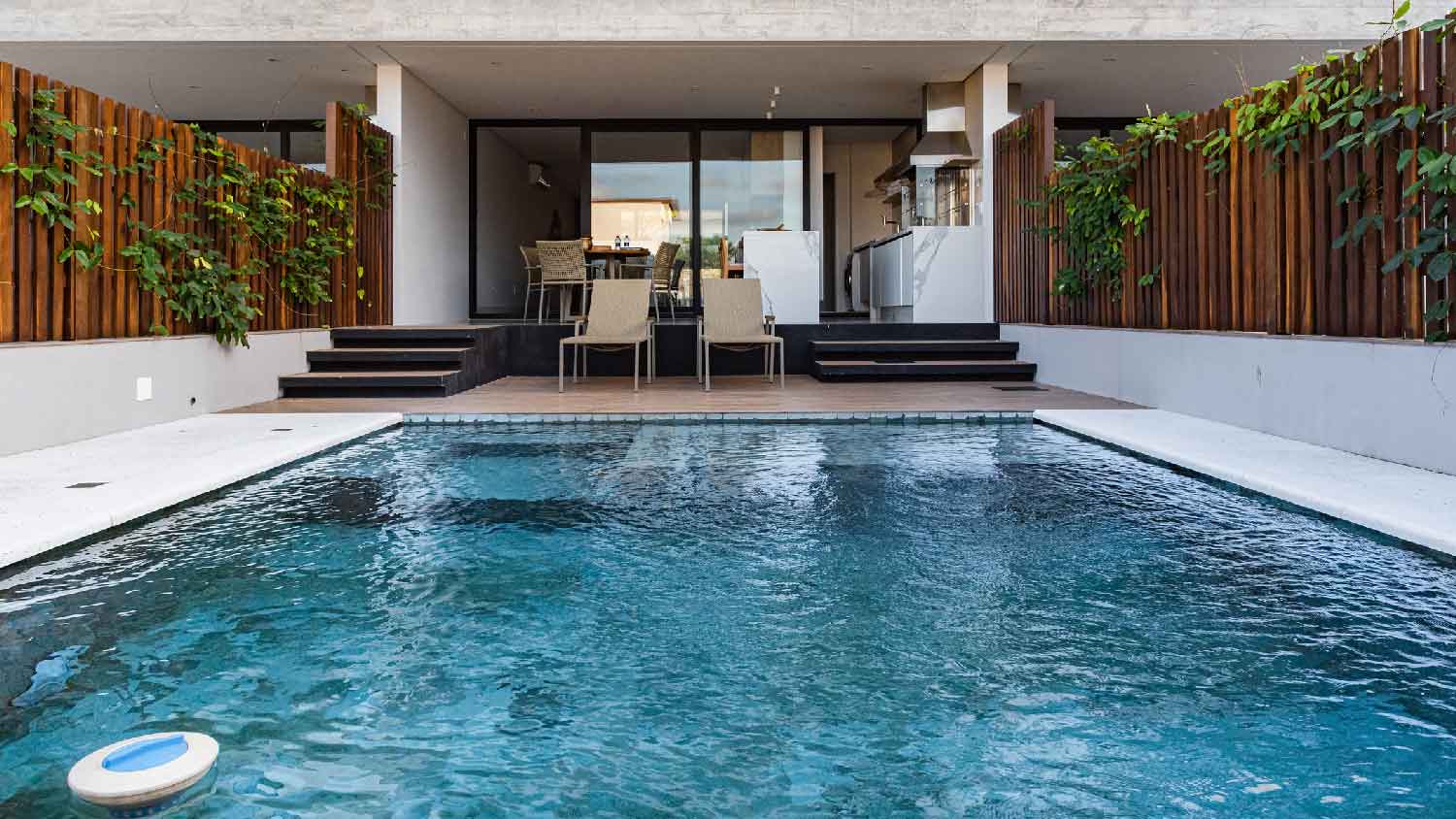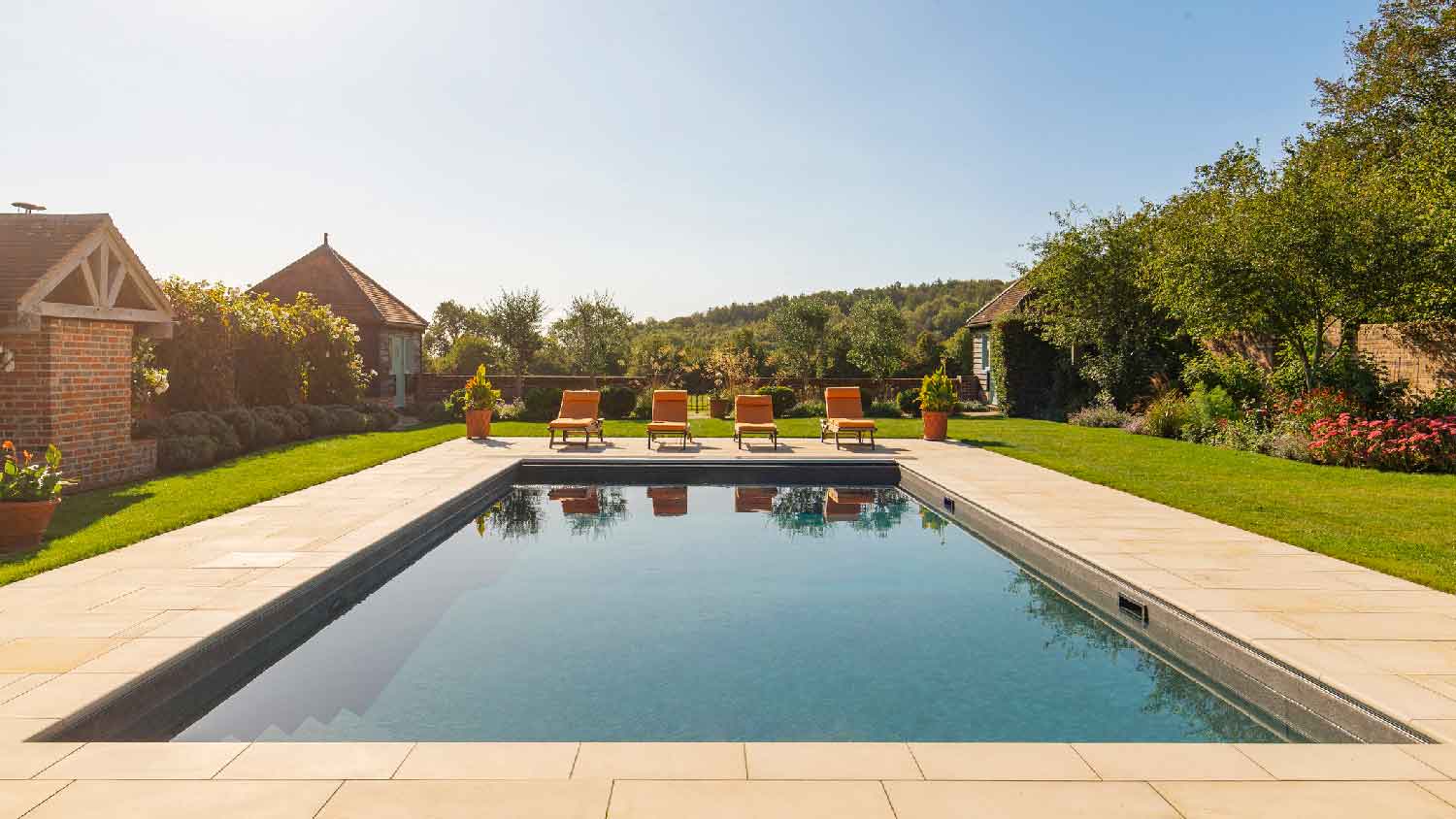
Wondering about hot tub cover costs? Learn what impacts pricing, compare materials, and discover ways to save on your next hot tub cover purchase.
Save your spa soaks for milder weather


Ahead of winter weather, it’s essential to learn how to winterize a hot tub to protect its components from freezing and bursting while you’re cozying up indoors. Luckily, it’s a relatively simple process. Here’s how to protect your hot tub until the weather warms up.
While these guidelines are suitable for most hot tubs, always consult your hot tub’s user manual before beginning this project. Hot tubs cost quite a bit, and you don’t want to compromise yours during the winterizing process. The manufacturer’s guide will specify what types of cleaners you can use and provide other crucial information to help your winterizing process go smoothly. If you can't locate your owner's manual, many spa manufacturers offer downloadable manuals on their websites.
It’s extremely important to not only shut off power to your hot tub, but also to cut off power entirely at the breaker. When you’re working with water, any potential electricity becomes a serious electrical shock hazard, so you need to be sure there is absolutely no power running to the tub. If the tub isn’t hard-wired, however, you can simply unplug it.
Next, remove the hot tub’s drain cap and attach your garden hose to the drain spout, placing the other end of the hose in a spot that can safely handle hundreds of gallons of water. Turn your tub’s valve and drain the water.
In rare cases, some hot tubs or spas don’t have drain caps, or the drain is in an awkward place to access with a hose. In these cases, you can use a portable sump pump to pump out the water without accessing the drain. Sump pumps are faster than using the drain. You can expect to spend between $100 to $400, and ensure it’s rated for portable outdoor use.
If your hot tub has an air blower, the next step is to drain it. Start by putting on the hot tub cover, then reconnect the hot tub to the power source by either plugging it in or flipping the breaker back on; then, switch the tub on. Once the hot tub is covered and operational, activate the air blower feature, allowing it to run for approximately one minute to expel any water from the channels. Disconnect the power once again when the blower has finished draining.
Open the panel to access the inner pump and heater. Loosen the unions and let the water drain from the plumbing lines. If the pump is equipped with a drain plug, be sure to remove it too, and allow any water inside the pump to drain out completely.
You should have already used the pump’s primary drain plug to connect a hose and siphon the bulk of the water out. However, there's a secondary drain plug in many models that’s connected to the pump or a similar check valve that serves the same purpose. This drain plug protects a certain amount of water—no more than a gallon—around the pump. It’s important to remove this water, especially if temperatures reach below freezing in your area.
Consult the hot tub manual to find a diagram or explanation of additional pump draining options. Look for a drain plug near your pump assembly (a flashlight can be useful). They can be difficult to reach, but if you spot one, unscrew it and let the remaining water drain out.
Water left in the plumbing lines can freeze and expand, potentially causing serious damage and leading to high hot tub repair costs. To clear out the lines, turn a wet/dry shop vac to the blow setting. Then, insert it into each drain, filter cavity, jet face, union, and suction. Blow for about 15 to 20 seconds to push any remaining water out of the lines.

Neglecting to clean your spa's filter cartridges before winter can result in a more challenging cleanup when spring arrives. After removing the cartridges, rinse them thoroughly with a garden hose and use a filter cleaner (see your user manual for approved cleaners) to gently eliminate any accumulated debris. Store the filters indoors over the winter.
Once you've successfully drained all the water from your hot tub lines, it's time to reinstall the drain plugs on the pump and spa. Ensure that all unions are securely tightened and that all gate valves remain open.
Now you can use your wet/dry vac to suck up any leftover water in the tub. If there is a lot of water, remove some of it with your sump pump first.
Cleaning the shell before storage is an important step in keeping your hot tub clean while not in use. Before covering up for the season, give your hot tub shell a thorough cleaning using an approved hot tub cleaning solution per the user manual. Use a non-abrasive sponge to scrub off any lingering dirt and grime.
Hot tub covers can get especially dirty and may even develop mildew, so take time to completely remove and thoroughly clean the cover. A hose may not be enough for this task: We recommend a tough sponge and a bucket with a water and white vinegar solution or vinyl cleaner. Give both sides of the cover a thorough scrub, getting rid of dirt, and rinse it off. Scrub the cover with a dry towel and let it dry out. You can also spray the cover with a vinyl protector. This is a helpful last step if the cover is aging, graying, or exposed to a lot of sunlight.
With the tub cleaned and drained, replace and fasten the cover. If the cover has straps or buckles, make sure they are locked in place to prevent winter debris or critters from getting in the cover gaps. If you get a lot of snow or winter storms in your area, it’s a good idea to attach a weather cover or tarp to the tub to protect the hard cover. You can weigh this tarp down to keep it in place over the colder months.
Finally, if your tub has a compartment door or similar cabinet, ensure it’s shut and well-sealed. Now your hot tub is ready for even the toughest winters!
While learning how to winterize a hot tub is pretty straightforward, it can get messy. Plus, if you’re not sure you cleared all the water from the lines, waiting out the winter can be anxiety-inducing. No worries, though—a pro can help you ensure your spa is winter-proof. Get in touch with a local hot tub repair technician to prepare your hot tub for the colder seasons.
From average costs to expert advice, get all the answers you need to get your job done.

Wondering about hot tub cover costs? Learn what impacts pricing, compare materials, and discover ways to save on your next hot tub cover purchase.

Discover how much installing a steam room costs, including average prices, key cost factors, and tips to save on your steam room installation.

Discover the average hot tub maintenance cost, what impacts pricing, and how to save money. Get expert tips to keep your hot tub running smoothly all year.

When you go for a dip in your pool, it should be refreshing, not slimy. Get answers to "why is my pool slimy" and find out how to fix it.

If you’re looking to get your backyard summer-ready, use this guide to learn pool opening costs, budget appropriately, and how to save money.

Common reasons for pool jets not working include clogs, low water levels, and air leaks. Read this to learn what’s causing your jet problem and how to fix it.